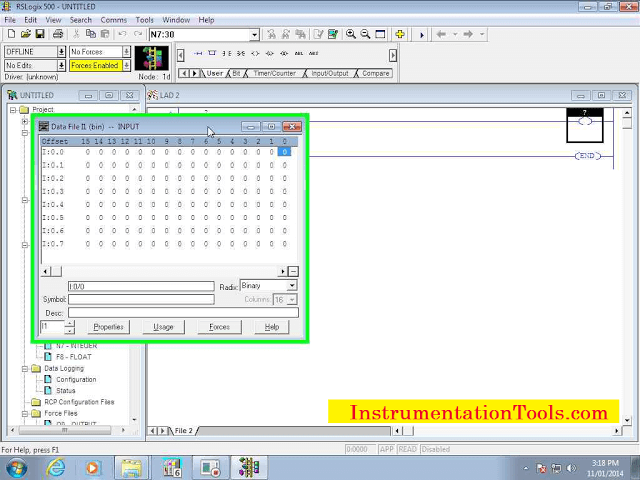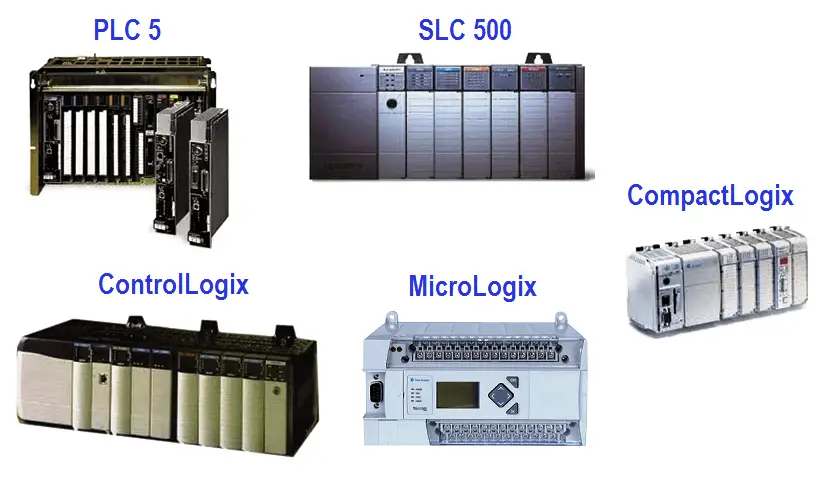
That being said, this feature is not used frequently in RSLogix 500 most elements are set to “Global” by default. If they must be used within multiple programs, they should be set to “Global”. The typical “best-practice” approach is to keep the elements confined to the program they will be used. Lastly, we can declare the scope within which the set of elements may be used.


In the example above, we have an array of 20 elements which dictates that the elements will be numbered as follows: N17:0, N17:1, N17:2. In other words, this would be equivalent to an array in RSLogix 5000 or other programming languages.īased on the number of elements within the array, the PLC will specify the “Last” element of the array. Within the “Elements” field, the user will specify the number of elements within the data structure. Below, we will find the “Elements” and “Last” fields. RSLogix 500 - Data Type Creation and PropertiesĪt the very top, as discussed above, we find the three elements that will be displayed in the “Data Files” section: File, Type and Name of the register. In this window, the user will find multiple key parameters. When the user right-clicks a data structure and selects “Properties”, he will be presented with the same configuration window as the one when a new data structure is created. Now that we’ve covered the different data types, it’s time to give more information with regards to their layout. Their type will depend on the I/O of the system. In other words, you will find all the input and output tags used within the program inside of these two structures. These data structures are created by the PLC once the user specifies the hardware used within the system. In the screenshot above, you’ll also notice that there are two elements at the start of the data file with labels and. Counter | A special register that will count a number of occurring events through the use of the CTU and CTD instructions.Timer | A special register that will contain a structure used in TON and TOF instructions that will time certain events.Float | A register that will store analog (decimal) values.Integer | A 16-bit register capable of storing values between -3277.Binary | The equivalent of a boolean or a piece of data capable of being set to 0 OR 1.Here’s a list of those we recommend you become familiar with: Basic RSLogix 500 Data TypesĪs a PLC programmer, it’s important to know the most commonly used data types. The “N18” register above, does not have a name attached to it.

Note that the name is optional, but recommended. The string specifies the name of the data structure. The number specifies an incremental position of this data register. The letter will specify the type of data being used.
#Plc rslogix 500 how to
In this tutorial, we’re going to look at the “cross-referencing” function of RSLogix 500 (Similar to RSLogix 5000), go over the steps on how to use it and cover how it can help you trace existing code faster and understand what’s going on in the PLC.

The specification of each tag may be confusing to a beginner and unclear when it’s used as word, bit or byte in different instructions. The second challenge many PLC programmers come across as they get started in RSLogix 500 lies in the data structures. Therefore, it’s easy to become frustrated trying to figure out where a certain tag is being used, how it ties into the logic and why it’s being used in certain places. This task creates a challenge for novice PLC programmers as the interface in RSLogix 500 as well as RSLogix 5000 is unlike any other. In fact, most PLC programming jobs will require you to work with existing code rather than write it from scratch. Many of those who start with PLC programming are faced with the challenge of deciphering code written by someone else. Cross Reference and Data Structures Introduction


 0 kommentar(er)
0 kommentar(er)
